Last year, I was lucky enough to fulfill my lifetime dream of traveling around the world. From my home in England, I flew 13 hours to India and over the course of ten months continued Eastward through over 20 countries before ending up in Kenya. I know that this was an opportunity that many dream of, but will never get to realise. I know many do not have the time or the money, but that doesn’t mean these places are out of reach. You can still experience these cultures and gain a background on their history, without leaving home, through the pages of a book.
Below is a list of some of the most memorable books that I have read on countries that I’ve traversed through, hope to explore, and one I doubt I will ever step foot in. They aren’t considered the most well-known books on a country out there, but they’ve helped me to glean a deeper perspective and understanding on each place. Learning about people and places outside my homelands is my passion. I hope you find the time in 2016 to read these poignant pieces of non-fiction and I hope that they excite you to visit some of these destinations that often appear far down on a Westerners travel list.
1) Pakistan
“Three Cups of Tea”, by Greg Mortensen
This is the first non-fiction book about a foreign country that I remember reading. It was originally published in 2006. I have no idea what drew me to this book, but it started my passion for devouring every personal account of foreign travel that I could find on a bookshelf.
This is the story of Greg Mortensen, who fell into a coma whilst mountaineering through the snowy peaks of Pakistan’s K2. When he awoke, he was in a tiny, remote village, being nursed back to health by the tribe’s chief. Greg goes on to tell the story of how he repaid these people for their generosity and for saving his life. A moving tale about how ultimately, despite our outward cultural differences, we are all experience the same emotions of love, laughter, sorrow, and determination to achieve against all odds.
2) India
“India: A Portrait’ , by Patrick French
India is the biggest democracy on earth. With one of the fastest-growing economies in the world, it is a nation in the midst of dramatic change. There are vast differences in wealth and living conditions between its 1.2 billion people. The people, dynamic country-side, and nine recognized religions create a country that has a wonderful kaleidoscope. So how do you describe and understand the ‘real India?. French travels all over the the country talking to everyone from political leaders to chained quarry workers to tell the story of post-British independent India.
This book stands out for me because it expertly wove the personal stories of the natives with historical facts and helped bring context to and understanding all the craziness I saw during my month there.
3) Laos
“Another Quiet American”, by Brett Darken
Laos was a country I knew very little about before I visited. It wasn’t on my bucket list of countries to see, it just happened to be in the vicinity of Cambodia and Vietnam, which were, so I decided to drop in whilst I was in that part of the world. It turned out to be one of my favorite countries. Perhaps that was because it is still very new on the tourist trail and its infrastructure is very basic. Or maybe it was because I had no expectations, as I knew nothing about Laos, so everything was a delight to unwrap. I picked up “Another Quiet American” at a bookstore in Luang Prabang, which lies in the breathtaking valley at the confluence of the Mekong and Nam Khan rivers, to help me understand more. I was so pleased I did. It really helped me to grasp a deeper understanding of all the things I saw.
The book looks at Laos through the eyes of an American who spent two years working in its capital of Vientiane. Some people may argue that you learn more about a country from a book written by a native, but I believe it takes an outsider to notice those traditions and cultural nuances that are intriguingly different. Larkin does this brilliantly. Through living there and befriending the locals he is able to answer many of the ‘Why?’ questions I had about Laos as I travelled through the country. He sheds light on the various classes through stories of his boss and his twenty-something friends. I’d definitely recommended this to anyone visiting Laos, one of the last few remaining communist nations.
4) Cambodia
“Lucky Child”, by Loung Ung
I’m too young to personally remember the atrocities that went on in SouthEast Asia during the 1970s. I also wasn’t interested in history as a child, so I am embarrassed to say that before going to the region, I only had a vague notion of what happened in even the Vietnam War. Even more of a disgrace, is the fact that before getting to Cambodia, I had never heard of the Khmer Rouge or the broad state-sponsored genocide of over 2.1million of its people by Pol Pot and his ruling party between 1975 and 1979. The Killing Fields was just a movie I had heard of, but never watched. Standing amongst the skulls and bones of thousands of victims inside the commemorative stupa at the Killing Field of Choeung Ek, I couldn’t help but think ‘How could I not know about this horrible part of World History?’
‘Lucky Child’ is the story of Loung Ung, a survivor of the Khmer Rouge. She harrowingly tells how her family was plucked from Phnom Penh and moved to the countryside as Pol Pot tried to eradicate any individual that appeared ‘intelligent’. She recalls seeing her best friend being shot in the back of the head and of her father being captured. She describes their poor living conditions and how all she wanted was go to school like a normal child. And she poignantly shares with the reader her suffering at being the one to accompany her eldest brother to America while her one surviving sister and two brothers were forced to remain behind in an non forgiving land. A heart-wrenching read, that seemed closer to home as it was about a woman who is only a few years older than me. I couldn’t imagine having the childhood and life she had.
When you understand that nearly all of Cambodians living today went through this horrible past, that nearly all lost someone they loved during those years, you begin to understand why this country is currently living life to the full. A must read.
4) North Korea
“Escape from Camp 14”, by Blaine Harden
Several summers ago, at an afternoon BBQ hosted by a friend, I met a young woman who had visited North Korea. I was instantly intrigued. I thought that country was off limits to Westerns, particularly Americans like me. She explained that it was possible to visit; however, you had to go on a state organized tour and that the officials showed you what they wanted you to see. She said it was like a huge propaganda trip to show how wonderful North Korea was. They were restricted on what pictures they could take and limited on who they could talk to.
I’m still fascinated by this country, which is the only totalitarian dictatorship in the world. Little is known about about this nation, which it keeps itself internationally isolated. However, as the number of defectors continue to increase, we are starting to learn more. Human rights violations are considered off the scale, with no comparison to any other country. It suffers from regular famines, and struggles daily to produce enough food to sustain its citizens. It is also the world’s most militarized society with a total of 9,495,000 active, reserve and paramilitary personnel in a country population of only 25,000,000. Compare that with the US were only half of one percent of its population is in uniform. Many outsiders believe that its citizens are being brainwashed by the government.
“Escape from Camp 14” is the story of Shin Dong-hyuk, the only North Korean to be born and raised in one of the countries political camps who is known to have escaped. North Korea denies the existence of the camps, which have been confirmed by hundreds of defectors to exist and which can be seen by satellite. They’ve been around twelve times as long as the Nazi concentration camps. Shin’s shocking imprisonment is hard to believe as reality, a place that still remains in our modern world. He relays how he does not understand the concept of love, that his parents, siblings, and friends were merely potential threats to his survival. His main daily focus was trying to stay out of trouble and finding food. Nearly every day for twenty-three years all his meals – breakfast, lunch and dinner – consisted of corn porridge, pickled cabbage and cabbage soup. In the end, it was the thought of eating chicken, pork and steak – as described to him by a prisoner he befriended that had been on the outside – that drove him to make the daring escape. I can’t image risking everything in my life and killing people I knew just because I was so hungry and wanted to experience the taste of meat. An intriguing look into a nation, 99% of us will never probably visit, including me!
6) Cuba
“No Way Home: A Cuban Dancer’s Tale”, by Carlos Acosta
Cuba is another country still not easily accessible by most Americans. I was lucky enough to visit in March 2014. Visiting Cuba was like traveling back in time a few decades. When I went, trading with American was still banned, which meant goods were scare. Outside Havana, the only cars you saw were 1950s Fords and Chevys, being held together with cobbled parts from Russian cars. That is if you saw cars at all. Often I only passed horse drawn carts. Shops were nonexistent outside the tourist areas. The locals had to buy all their goods from one small store, where all the haphazard assortment of goods were behind the shelf. I noticed toothpaste, light-switch covers, and one style, one size, one color of bikini on sale side by side. A new delivery of double mattresses were being sold quicker than free money could have been picked up off the ground. When I asked why my guide responded that they didn’t know when or if they’d ever get a shipment again. You had to buy when it was available. It was 11am on a Tuesday, and it seemed everyone in town was buying one.
Cuba is a socialist state. And as hard as it is for Americans to get in, it is even harder, if near impossible, for the locals to get out. ‘No Way Home’ is the tale of Carlos Acosta, who grew up in the poor streets of Havana and against all odds became a principal dancer of the Royal Ballet in London. He talks about his childhood in Cuba, about the shock of leaving for the first time, and about how living in London changed him forever. Poignantly he explains how you can no longer go back to the home of your childhood and feel the same way about it after you’ve travelled the world. A concept that is challenging to explain to someone hows never experienced it, but if you have it will hit ‘home’ hard. A poetic look at another one of the world’s isolated countries.
7) Africa
“Walking the Nile’, by Levison Wood
Ok, so this isn’t about one country, but I did find it a fascinating read into the interior of Africa and through many countries outside the tourist trail – namely Rwanda, Uganda, South Sudan, Sudan and Egypt. I read this book just after returning from a two month overland trip through the Southern African countries of South Africa Namibia, Botswana, Zambia, Malawi, Tanzania, Kenya and Uganda, and found that much of what Wood described resonated with what I saw elsewhere in Africa.
This book is Wood’s account of trying to be the first person to walk the full length of the Nile from its source in Rwanda to its end in Egypt. He doesn’t succeed, sadly, but he still covers over 4,250 miles on foot passing through rainforest, savannah, swamp, desert and lush delta oasis. Along the way he experiences the same desolate, poor conditions and the identical welcoming people that I did elsewhere in Africa. Unlike me though, he encountered war zones and watched a friend die during his journey. This is a book that can take you out of your sofa from wherever you are reading it and transport you into the middle of Africa. A must read.
8) A Bit of Everywhere
“Tales of a Female Nomad”, by Rita Golden Gelman
These are the stories of a woman, who after getting divorced in her late 40s, decided to live her life differently. Her dream was to connect with people in cultures all over the world. So she sold all of her belongings, purchased a backpack and became a nomad. The book follows her adventures over 15 years through the off-the-beaten regions of Mexico, Guatemala, Nicaragua, Israel, Galapagos Islands, Indonesia, New Zealand, and Thailand. What is interesting about this book is that Gelman ventures into the heart of a culture. She finds ways to live and connect with locals that are far deeper than any tourist and most backpackers do. Many times, she becomes the fabric of the community in which she delves into. The result is an insiders perspective into some of the most remote parts of these countries, told from an outsiders point of view.
The joy of this book for me was that it provided an example of someone who choose to live life differently and was happily enjoying it. Gelmen encourages us all to dust off our dreams and grab them before life passes us by.

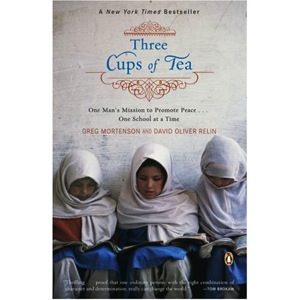
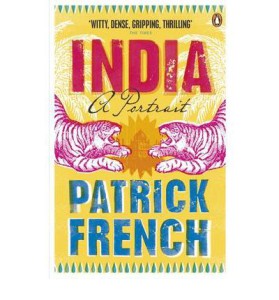
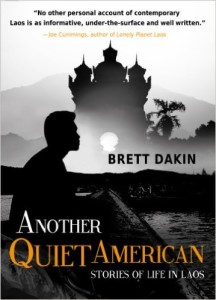
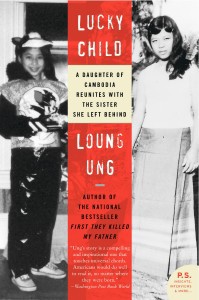
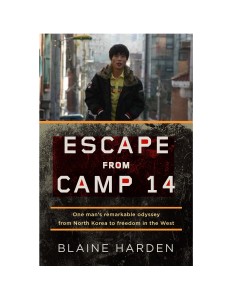
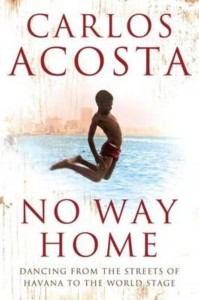
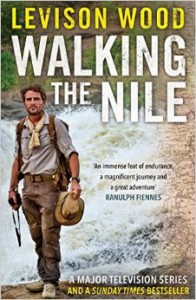
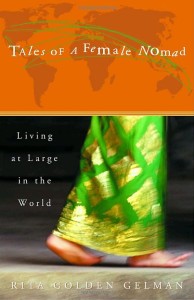


Love this post! All the sorts of books I love to read – will especially look up the one on Pakistan. Just finished a good one on Bhutan called The Dragon’s Voice which is about an Australian journalist
An addition to the list would be:
9) South Korea – Still Life With Rice by Helie Lee. This book tells the life story of a South Korean women who lived through the Japanese occupation and the Korean War. Her account of leaving her home in Pongyang North Korea during all the fighting and walking with her four children to Seoul, fighting hunger and death every step of the way, will leave you humbled, and utterly grateful for everything that you have in your life. A harrowing account.